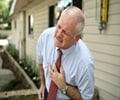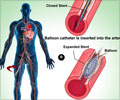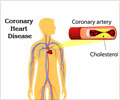Simple scan could be used to guide treatment decisions for angina patients, reveals a new study.

‘Simple 40-minute test for angina could help patients avoid an overnight stay in hospital.’
Read More..




The MR-INFORM trial looked at whether magnetic resonance imaging (MRI) could be used to guide treatment decisions for angina patients, rather than performing a more invasive procedure.Read More..
Angina is chest pain caused by reduced blood flow to the heart muscles. The condition affects two million people in the UK and is a warning sign that you could be at risk of a heart attack or stroke. Treatments include drugs to lessen the pain and changes to a healthier lifestyle.
Currently, patients diagnosed with the condition are usually sent for an invasive angiography, a procedure which involves taking X-rays of the patient's arteries, and involves multiple hospital visits, including an overnight stay. If the condition is severe, patients have a procedure to improve blood flow to the heart called revascularization.
The MR-INFORM trial looked at 918 patients with angina and risk factors for coronary heart disease, who were divided into two groups. One received the standard invasive angiography. The other had the 40 minute MRI perfusion scan of the heart, to decide whether to send the patient on for invasive angiography.
The two groups had similar outcomes for patients' health with under 4% of patients in both groups having cardiac events (such as heart attacks), in the following year. However, the group whose treatment was dictated by their MRI scan had significantly fewer procedures, with only 40% of this group going on to have invasive angiography. Only 36% of the MRI group went on to have revascularization, compared to 45% in the other group.
Advertisement
"We have shown that MRI imaging, which is less invasive than current diagnostic tests, could mean that patients' initial visits to the hospital are quicker and more patient-friendly, and that they are less likely to have further procedures. But crucially the outcomes for patients of taking this approach were similar, so there is no negative impact of directing treatment in this way only to those we're sure need it.
Advertisement
Source-Eurekalert














